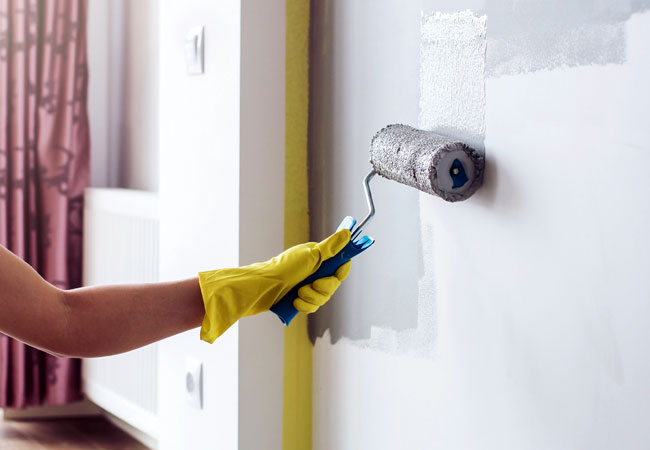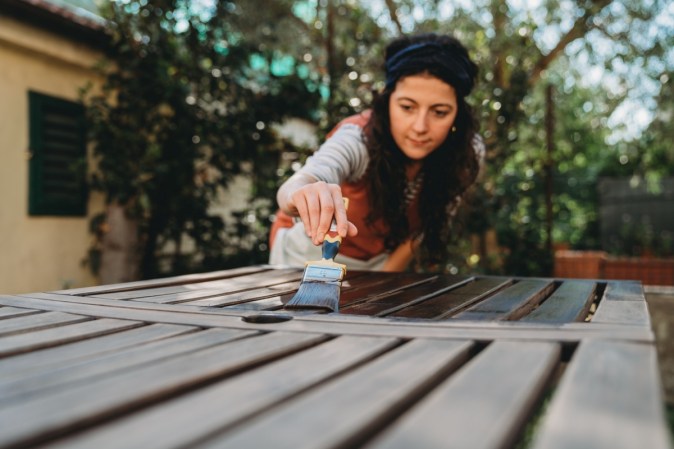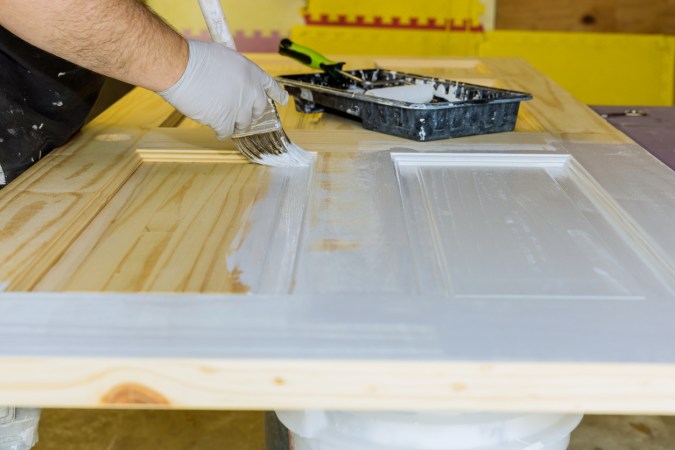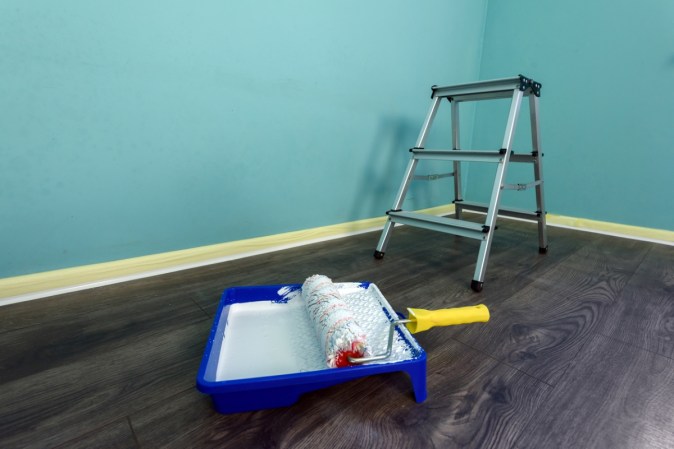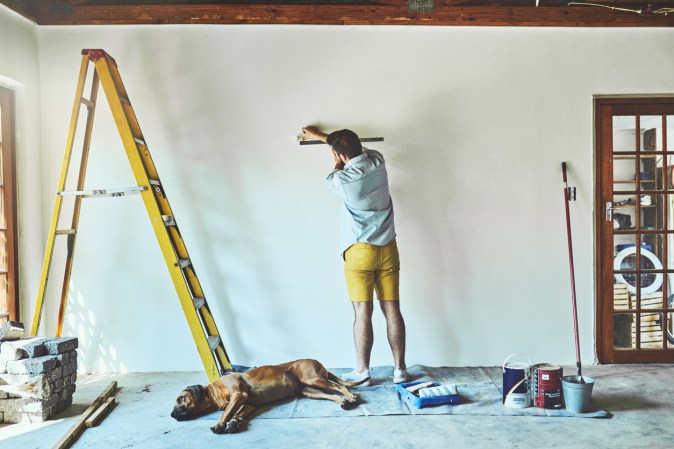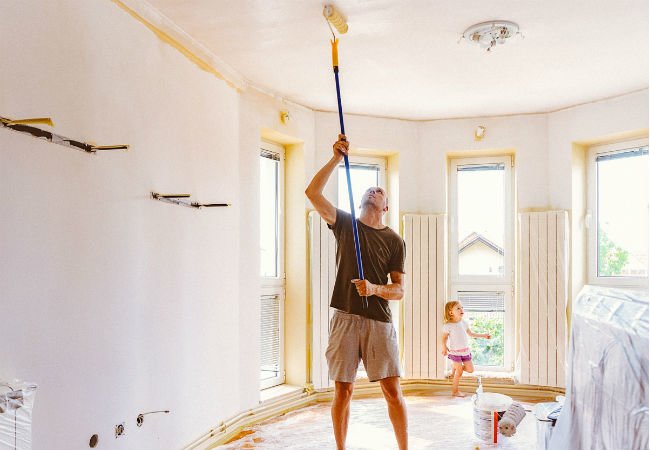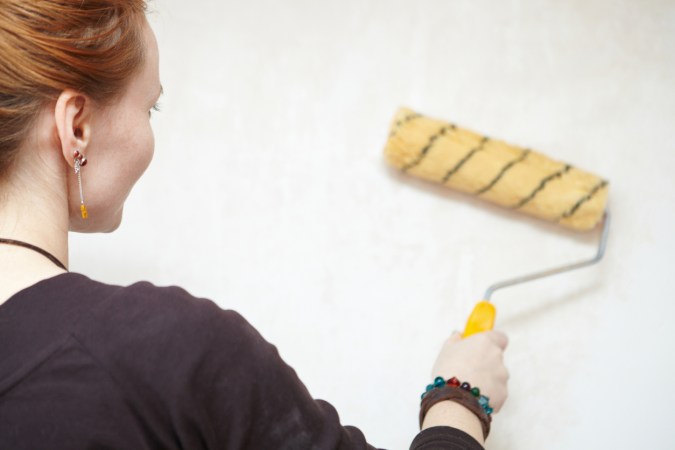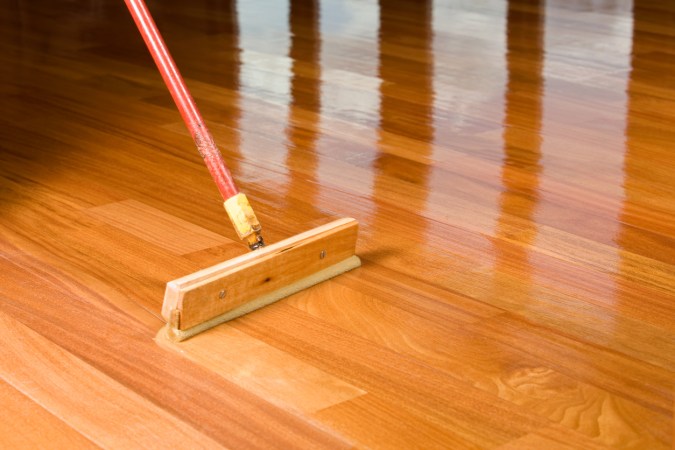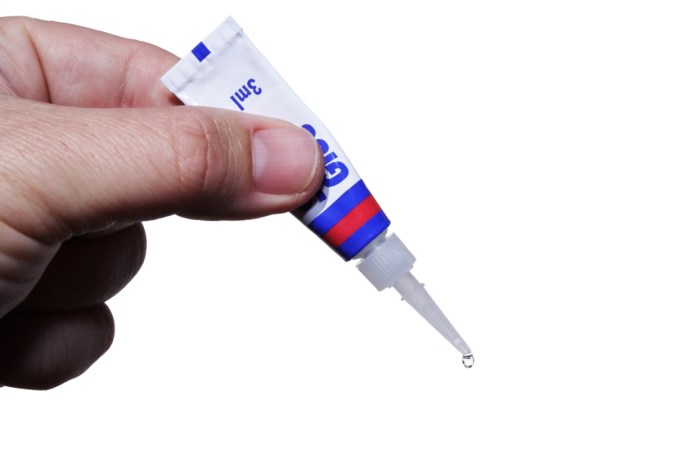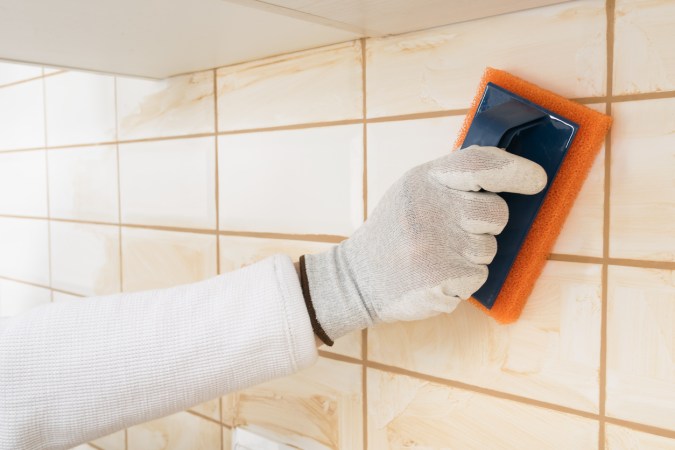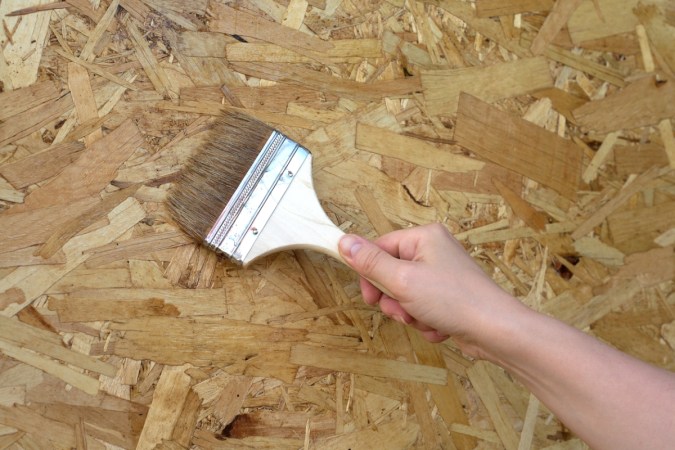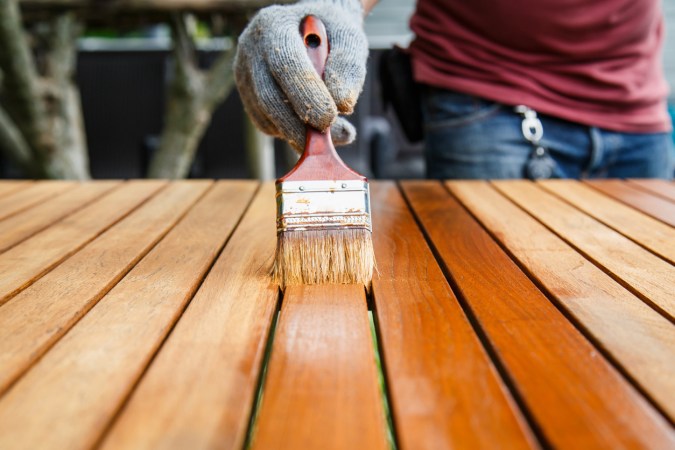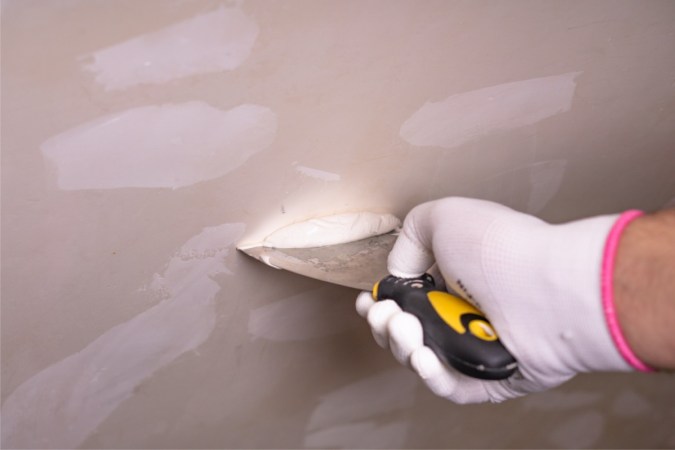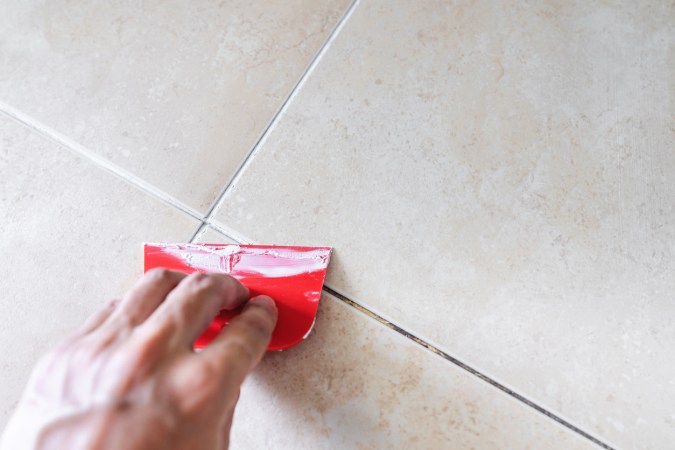We may earn revenue from the products available on this page and participate in affiliate programs. Learn More ›
Q: I’m about to refresh my living room walls, but I’ve seen different opinions on how long to wait between coats of paint. How long does it take for paint to dry?
A: You’re smart to check! Allowing paint to dry between coats helps prevent uneven texture and visible smudges that you wouldn’t want messing up the results of your hard work. While there are general dry times for both oil- and water-based (i.e., latex) paint, various factors can impact how quickly you can roll on that second coat. Read on to learn about paint dry times so you can achieve professional looking results that last.
Paint Dry Time by Type of Paint
The type of paint you choose, whether for an interior or exterior surface, will affect dry time. Your project may call for the durability and smooth, glossy finish of an oil paint, or you may prefer the crack-resistant, low-VOC attributes of latex paint. Either way, you’re wise to get a sense of dry times for the product you’ll be using.
- Latex paints dry more quickly than their oil-based counterparts. It typically takes about 1 hour until a first coat is no longer wet to the touch and 4 hours until another coat can be applied on top.
- Oil-based paints tend to require 6 to 8 hours to become dry to the touch and 24 hours before the next coat can be applied
Paint type is only a small part of the equation, though. Consider the other important factors that affect dry.
Other Factors That Affect Paint Drying Time
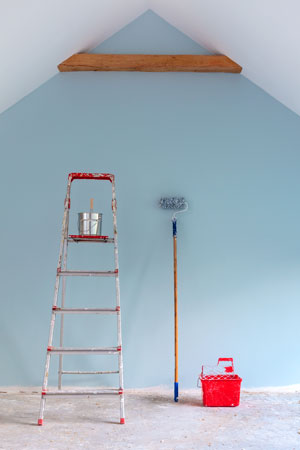
When, where, and how you paint can alter dry times of both oil and latex paint. Weather conditions (even for interior projects), ventilation, and the manner in which paint is applied are among the important points to consider before you start a project..
High humidity equates to longer dry time.
The more humid a room (i.e., the more moisture in the air), the longer it takes paint to dry since a paint’s water content won’t evaporate as easily in high humidity. Ideally, try to paint in rooms with 50 percent humidity or lower for the fastest drying time. Using a dehumidifier in the room can help. Try to time exterior projects to several days of dry weather.
Temperature also impacts dry times.
If using latex paint, apply in temperatures between 50 and 85 degrees Fahrenheit. If working with oil-based paint, the ideal temperature range runs from 40 to 90 degrees Fahrenheit. Painting in an air-conditioned interior lets you set the thermostat to maintain the desirable temperature. For outdoor jobs or interiors without HVAC, avoid very hot and very cold days. Temperatures outside the recommended zone can slow the evaporation process, causing paint to dry noticeably slower.
Ventilation is key.
If you cannot keep the windows open or otherwise provide proper ventilation, expect paint to take longer to dry. The fresh air of a well-ventilated space encourages the water molecules to evaporate and the paint to cure.
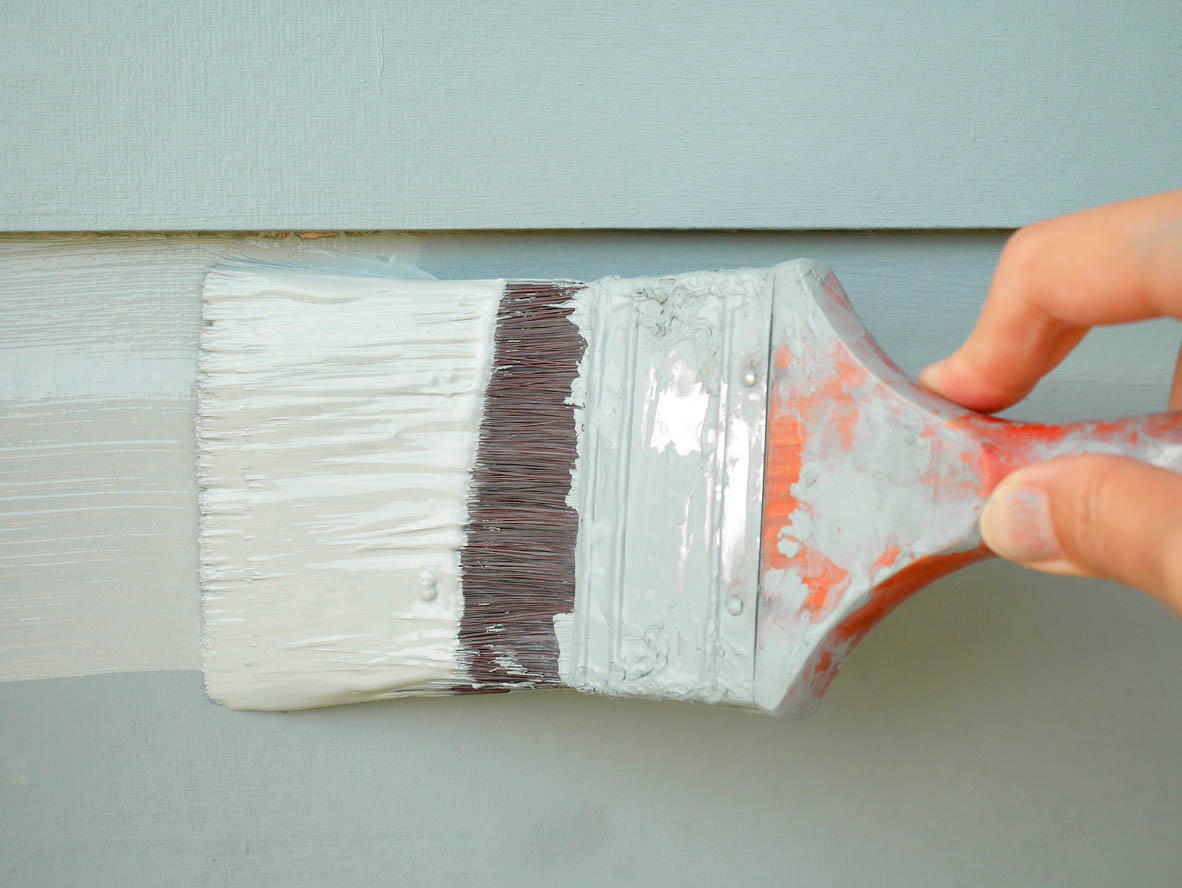
The starting surface plays a role.
If you’re painting raw wood, dry time will likely be shorter than when covering a previously painted surface. Should your task call for putting oil-based paint on a surface previously painted with latex (or vice versa), dry time may increase.
Application method matters.
As a general rule, thin coats of paint dry faster than thick, heavy coats. So for optimally fast-drying results, use a paint roller as opposed to a brush. Take care to apply each coat with an even hand, resulting in a consistent finish without gloppy edges or runny streaks. Painting with a brush tends to cause thicker coats, which may add extra hours to drying time.
Err on the side of patience.
Follow the instructions provided by the manufacturer of the paint you’re using, and pad the time frames a bit to be safe. If you’re operating in a less-than-ideal environment (like a room with inconsistent temperatures, poor ventilation, or high humidity), think of the manufacturer’s directions as a baseline, adding as much time as necessary to avoid the unflattering finish that comes with applying a second coat of paint too quickly.
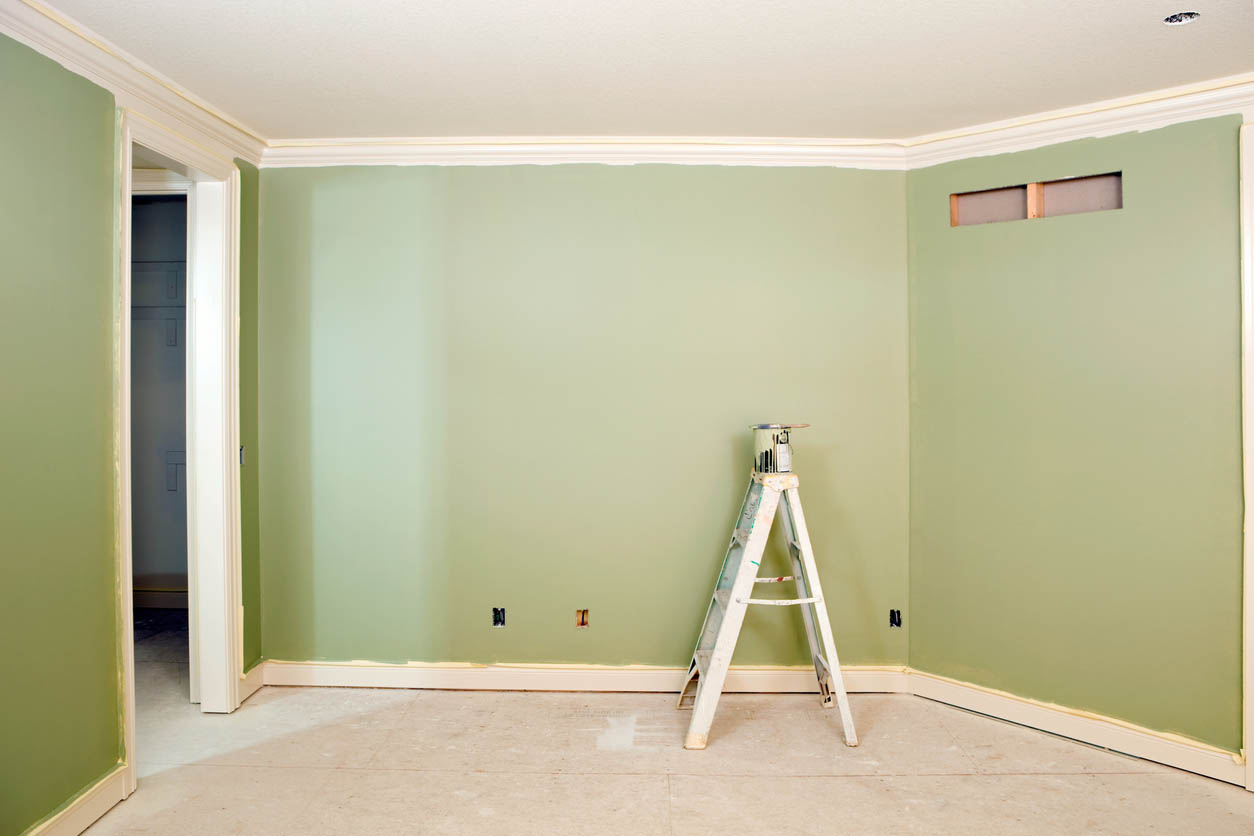
How Long to Wait Between Coats of Paint
Now that you have an idea about paint dry times and the conditions that can impact them, consider how long to wait between primer and paint coats.
Primer (aka Undercoat)
Primer, a mixture of paint and glue, prepares a surface for the best possible paint adhesion. It can also hide surface imperfections that might otherwise show through paint. So unless you’re using a paint-and-primer combination product, don’t skip this step!
- Use latex primer under latex paint; while it may be dry to the touch in just 30 minutes, wait a good 3 hours before proceeding with paint.
- Use oil-based primer under oil-based paint, and give that all-important primer coat 24 hours to fully dry.
Latex Paint
The first layer of paint applied over primer is called the base coat, and the crucial second layer is the topcoat. All quality paint manufacturers recommend at least two coats of paint for durable, long-lasting results. More coats might be required if, for example, painting a light color over a darker shade. Wait at least 4 hours between coats of latex paint.
Oil-based Paint
Oil paint takes longer to dry than latex paint, so practice patience and wait 24 hours between coats. If this is a rush job and you must use oil paint, look for products with the additives manganese, zirconium, and/or cobalt compounds—chemicals that help paint dry more quickly.
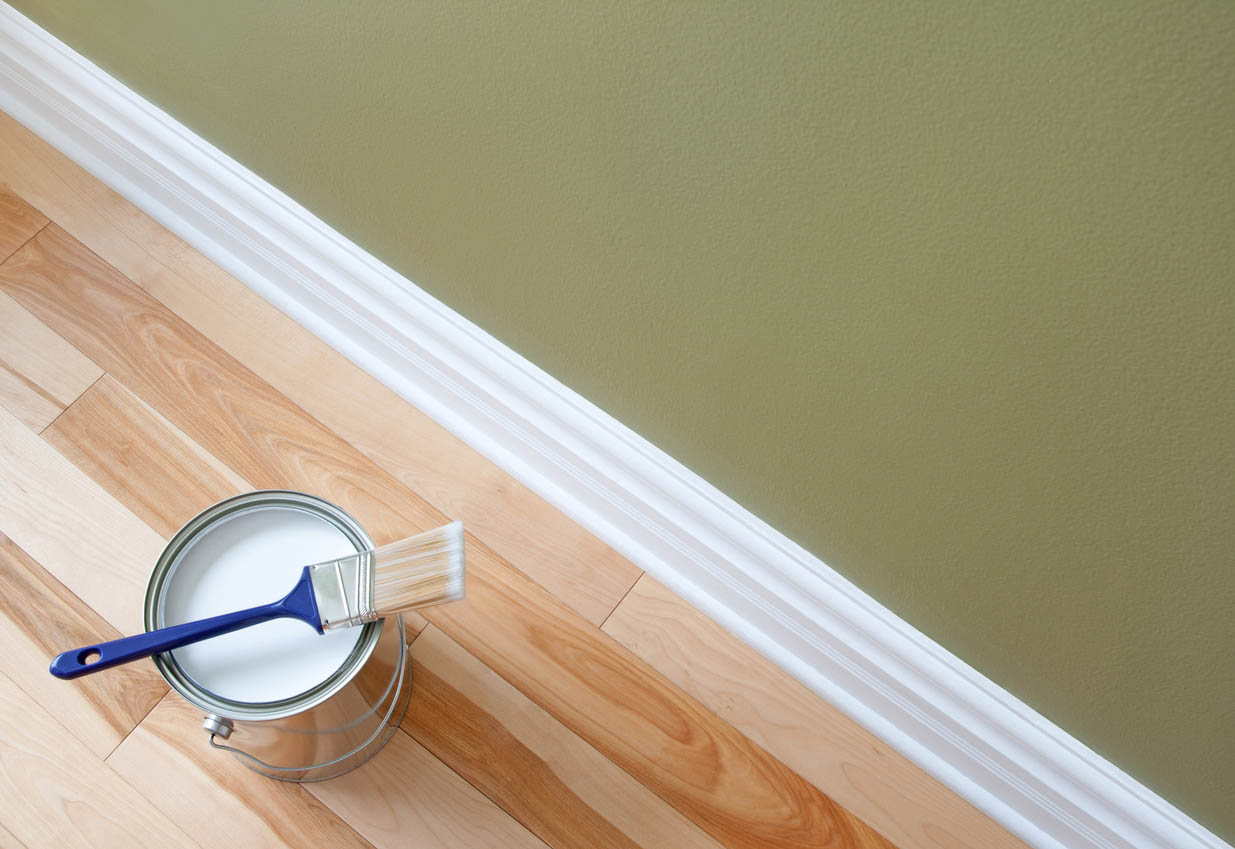
The Differences Between Dry, Recoat, and Cure Times
In common conversation, “dry” may simply mean “not wet.” But when it comes to painting and applying other finishes such as stain and varnish, it’s best to know the difference between dry, recoat, and cure times.
Dry time refers to the recommended length of time between coats of product. It is often also called recoat time, so the terms are interchangeable.
Cure time is the ideal length of time to wait before the surface can withstand daily use. For latex paint, cure time is typically between 2 and 4 weeks. (Low-gloss paint will cure more quickly.) Interestingly, though oil-based paint takes more time to dry, it should be fully cured within 7 days.
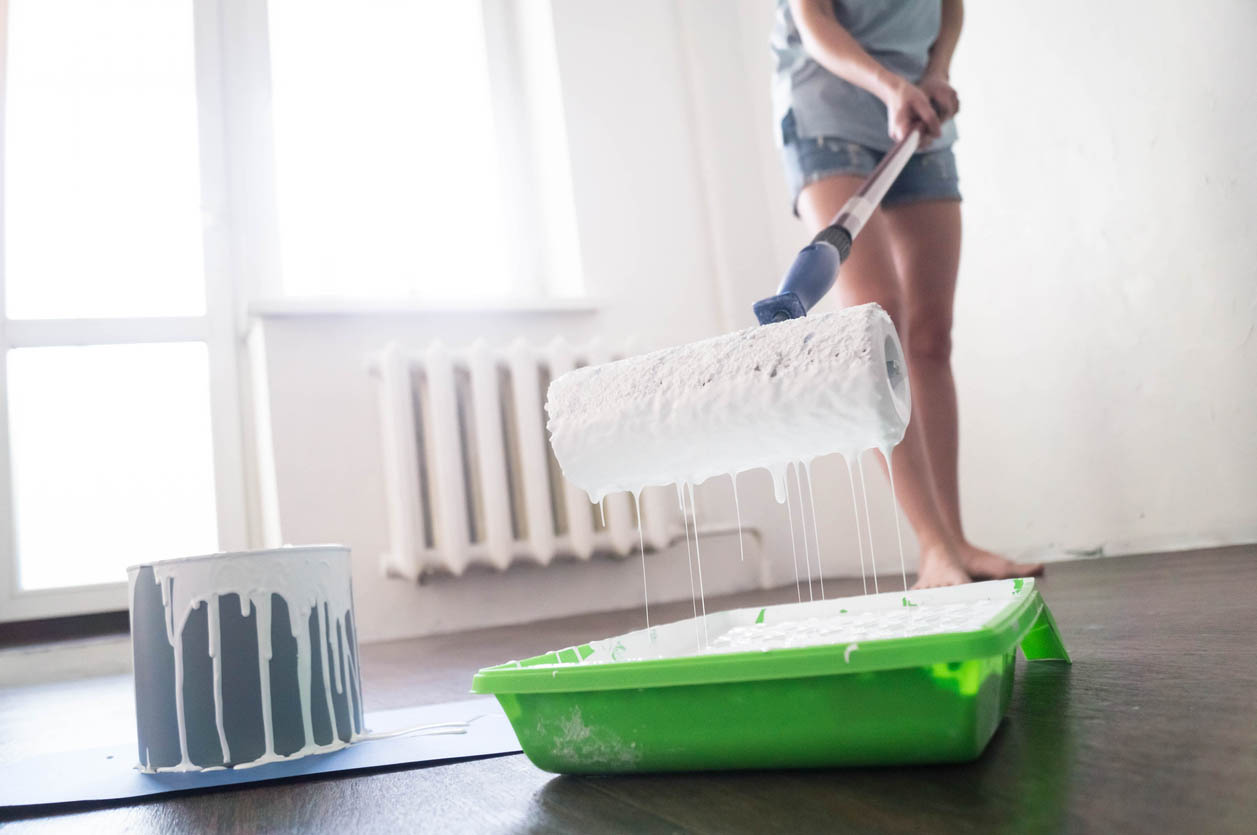
FAQ About How Long it Takes Paint to Dry
If you still want more information about paint dry times, consider the answers to these frequently asked questions.
How long after painting can you hang things?
Ideally, you should wait until your paint project has fully cured before you hang artwork or otherwise resume regular use of a newly painted surface. The cure time for latex paint can be as long as a month, while the cure time for oil-based paint is about a week.
Do I really need to wait 4 hours between coats of paint?
Yes, patience is key if you want quality results that last. Failing to wait the recommended recoat time can weaken the bond between the paint and the surface, leading paint to possibly blister, crack, or peel down the line. That 4-hour period is the recommended wait time between coats of latex paint, but for an oil-based product, wait 24 hours between coats.
How long should you wait between coats of paint?
The recommended dry time between coats of latex paint is 4 hours. For oil-based paint, wait 24 hours between coats.
How can you make paint dry faster?
Maintaining the ideal temperature and humidity level in the environment, and keeping the space well ventilated, will keep dry times to the shorter end of the range. But trying to hasten paint dry times is a bad idea; this can weaken the bond between the paint and the surface and lead to peeling or cracking down the line.
How long until you can sleep in a painted room?
As paint dries, it releases gases and odors. This is one reason why water-based paint, which typically has less harmful VOCs (volatile organic compounds) than oil-based products, is preferred for interiors, especially bedrooms. If using a water-based, low-VOC paint, you should still wait at least 4 hours before sleeping in the room. With oil-based paint, wait at least 24 hours before bedding down in a freshly painted room. Be sure to check manufacturer’s recommendations as well.
Final Thoughts
Patience is a virtue—particularly when it comes to paint projects! Stick to the recommended wait times between coats, and the suggested cure times before resuming daily use, and your painted surfaces will look great and really last.
